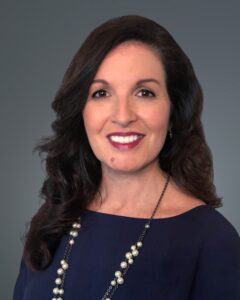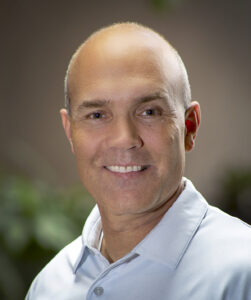Writer: Felipe Rivas
2 min read April 2021 — From restoring power to residents after a natural disaster to helping drive sustainability and resilience efforts forward, Florida’s utilities play a major role in maintaining a vibrant business climate and high quality of life. In interviews with Invest:, sector leaders Melissa Seixas, Florida president for Duke Energy, and Archie Collins, President and CEO of Tampa Electric, reflect on the current state of the energy industry, where it is headed and the importance of collaboration among utilities.
How do you prepare for extreme weather within your model?
 Melissa Seixas: The cold snap in Texas this year put a lot of attention on the generation and delivery of power. Users don’t usually think about the technical operational pieces that happen behind it but, like a lot of other utilities, we spend 365 days a year focusing on extreme preparation. For us, it’s usually not cold, it’s more about hurricanes and tropical storms, so we must plan for all of it. We do that through a diverse generation mix. We also have a demand-side management program in which customers can voluntarily participate. The program allows us to interrupt service to a pool pump, air conditioning or heat to decrease the demand and allow us to continue to provide service without any major interruption, like blackouts. The case of Texas was more of a generation challenge than it was the recovery from damaged poles, wires and similar equipment. We are also part of a nationwide interconnected power network that enables power to be exchanged between utilities.
Melissa Seixas: The cold snap in Texas this year put a lot of attention on the generation and delivery of power. Users don’t usually think about the technical operational pieces that happen behind it but, like a lot of other utilities, we spend 365 days a year focusing on extreme preparation. For us, it’s usually not cold, it’s more about hurricanes and tropical storms, so we must plan for all of it. We do that through a diverse generation mix. We also have a demand-side management program in which customers can voluntarily participate. The program allows us to interrupt service to a pool pump, air conditioning or heat to decrease the demand and allow us to continue to provide service without any major interruption, like blackouts. The case of Texas was more of a generation challenge than it was the recovery from damaged poles, wires and similar equipment. We are also part of a nationwide interconnected power network that enables power to be exchanged between utilities.

Archie Collins: When we think about preparing for adverse weather in Tampa, we generally think about hurricanes and heat. That’s what spurred the Florida Public Service Commission to approve the Storm Protection Plan clause. This mechanism allows utilities to make prudent investments that are in customers’ best interests with the intent of making our grid more resilient to adverse weather. This includes moving transmission from wooden poles to concrete or steel poles, moving distribution circuits underground and adding flood protection to substations. We’re carrying out a lot of work to strengthen our grid in the face of climate change.
The sustained cold weather event that Texas experienced is unlikely in Tampa. But it is a reminder to us of just how dependent we are on electricity, and how important “always on” electricity is to our customers. So while we believe sustained sub-zero temperatures are improbable, we are not taking anything for granted and are carefully evaluating all lessons we can learn from that situation.
How important is collaboration with other organizations for the energy industry?
Seixas: There is a lot of collaboration among the utilities, which is necessary for the benefit of all Floridians, whether it is with EV charging stations or storm response. When a storm approaches and we are on the back end of an intense restoration process, we call on the mutual aid agreements for line workers across the country. Collaboration is critical, but on the EV front it’s even more important because Florida is a big state. Therefore, being able to strategically place charging stations in locations that help advance the adoption of hybrid vehicles is important to us. In the last three to four years, we’ve installed over 530 charging stations across our 35-county service territory. We’ve also tried to strategically place them in locations that have a larger vehicle footprint so people who are traveling have charging options along the way. We want to help eliminate that range anxiety that exists with EV charging stations.
Collins: Members of the energy sector rely on one another, and that is especially evident when it comes to providing mutual aid for power restoration following a storm. At Tampa Electric, we appreciate the help of others when we require it, so when asked, we take the responsibility to support other utilities very seriously. We typically respond to three or four requests per year, and our crews are dispatched for several weeks at a time. In 2018, we sent crews to Puerto Rico for two months to help restore power after Hurricane Maria. We make this a priority because, as I said, during hurricane season we are often the ones making the request for support. The support utilities provide to each other is vital.
What is your outlook for your organization and the energy industry in Tampa Bay for the next 12 to 18 months?
Seixas: There are four factors in terms of my vision and my focus of work: generating cleaner energy, modernizing the grid, transforming the way we engage our stakeholders and engaging our employees. We must keep pace and be on the leading edge of that transformation of our industry. For the foreseeable future, it’s all about delivering on those commitments with and to our customers. A priority for Duke Energy Florida is our involvement in the community, whether we are participating as board members, business organizations and nonprofits, and our commitment through our foundation.
We are well positioned to help our customers meet the goals they have around reliability, resilience and a greener future. Listening to what customers are saying is critical to how we move forward. For example, we know a secure grid is important to our customers. The Storm Protection Plan is about resilience and providing a more secure infrastructure system and grid. It will focus on different elements and components of our grid, including transmission, substation distribution, flood mitigation in substations, strengthening mainlines or branch lines that feed neighborhoods, and appropriate vegetation management. Making these investments is an important way we deliver on our commitments to our customers so that they don’t even have to think about the grid and are able to focus on their lives.
Collins: Climate change is certainly a worry, and as a result we are working hard to strengthen and modernize our system. Fuel supply is another concern because it all comes from out of state, and pricing can be unpredictable. This is one of the many benefits of investing in solar energy. I also think we need to improve the diversity of our workforce at all levels, so that we do a better job of reflecting the community we serve.
That said, I am very optimistic about the future. This community remains a destination of choice, it is growing quickly, and the employees at Tampa Electric are proud to do their part to support and enable that growth.
For more information, visit:
https://www.duke-energy.com/home
https://www.tampaelectric.com/
